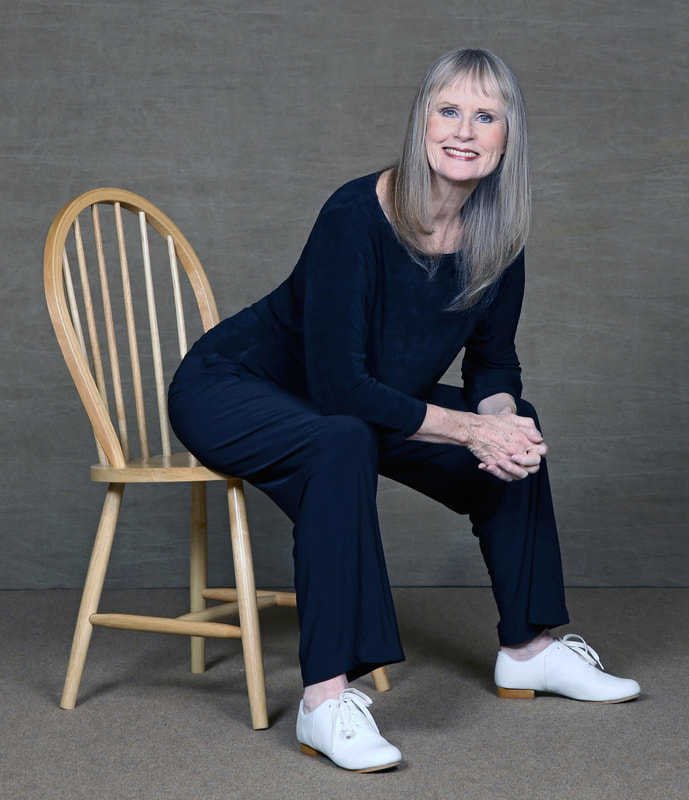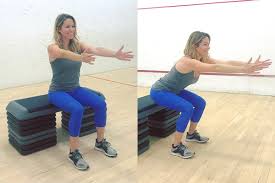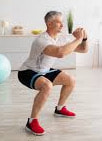THE HIP HINGE
The essential element in lower back health.
80% of adults suffer from lower back pain at some point. Misuse of our spine throughout our lifetimes is a major culprit. Generally speaking, our spine joints are too fragile for the way we use them. We employ our spine when we should be using our hips instead. This leads to overuse of lower back musculature which in turn inflames the nerves of the lower spine ultimately resulting in debilitating conditions like osteoarthritis, spinal stenosis, sciatica, scoliosis, herniated disks or pinched nerves.
There is a amazingly simple solution to this and any other lower back distress: the Hip Hinge. The Hip Hinge accomplishes an extremely important task: isolation in movement of the hip joints as distinct from the spine joints. The hinge is also known as a Squat, a fundamental fitness exercise.
There is a amazingly simple solution to this and any other lower back distress: the Hip Hinge. The Hip Hinge accomplishes an extremely important task: isolation in movement of the hip joints as distinct from the spine joints. The hinge is also known as a Squat, a fundamental fitness exercise.
|
This article examines 2 different hinge approaches:
|
Specific exercises are described in detail here:
Hip Hinge Exercises.
Hip Hinge Exercises.
Keep in mind what makes the hinge or squat distinct:
a clear bend in the hip and knee while keeping the spine straight.
You will find the hinge position common to many different human activities including natural childbirth. Sports uses the position throughout almost every field. This article describes how 4 groups in particular benefit from this concept to great advantage:
- Seniors: Seated isolation of the hip joints is the most marvelous, simple and safe method for an amazing relaxation of lower back tension. It is a principle of spine health helpful for anyone, any age and any style of movement. The central concept involves lower back release instead of improving strength or stretch.
- Weightlifters: The Hip Hinge is elemental in what is the most fundamental exercise for anyone involved in lifting weights: the Squat. It is a very effective way to build lower body strength while protecting and stabilizing the spine.
- Dancers: Dancers on the other hand in general value integration of the torso with the legs. This is especially true in ballet where the long line of the body is emphasized. Isolation of the hip joints is a foreign concept to most dancers.
- Belly Dancers: Middle Eastern style is somewhat different in lower body use than other types of dance. Pelvic circles and sharp hip work merge hip and lower spine motion, never isolating one from the other, making true hip isolation difficult. In addition, hyperextension of the lower spine is common in belly dance, exacerbating spine distress. Mastering the essential hip joint release of the seated hip hinge is amazingly recuperative for all, especially the experienced dancer.
Why is the hinge or squat so significant to fitness?
Try this short experiment:
Both the Hip Hinge and the Squat rely on the legs being in this more open position. Of course this becomes an ideal and powerful posture: either for the marvelous release of the Hip Hinge or the base of strength of the Squat. The hip joints are in a fundamentally robust orientation.
Here is another example: Stand with your feet close together. Feel how steady your balance is. Now separate your feet so that your toes are somewhat turned out. Soften your knees. Feel how stable you are. The reason for the increase in stability is because the hip joint is in a much sounder and stronger stance that is multidimensional. When your feet are closer together, your body is more precariously weighted. If someone were to bump you from the side, you might easily fall. But not if your feet are apart.
- Sit forward in your chair with your feet close together, your knees over your feet. Sit with your lower back straight and vertical. How long could you sit that way? How much low back stress do you feel?
- Now change your legs so that they are farther apart with your feet turned out moderately. Again sit with your lower back vertical. Amazingly not only does the stress disappear but you could sit that way all day long!
Both the Hip Hinge and the Squat rely on the legs being in this more open position. Of course this becomes an ideal and powerful posture: either for the marvelous release of the Hip Hinge or the base of strength of the Squat. The hip joints are in a fundamentally robust orientation.
Here is another example: Stand with your feet close together. Feel how steady your balance is. Now separate your feet so that your toes are somewhat turned out. Soften your knees. Feel how stable you are. The reason for the increase in stability is because the hip joint is in a much sounder and stronger stance that is multidimensional. When your feet are closer together, your body is more precariously weighted. If someone were to bump you from the side, you might easily fall. But not if your feet are apart.
The Hip Hinge and the Squat are inherently strong and stable. Both serve as an excellent foundation for health and well being. It is strongly suggested that either or preferably both be included in your fitness regimen.
Hip Hinge & Squat exercises are explained in detail using this link:
Published July 17, 2023



